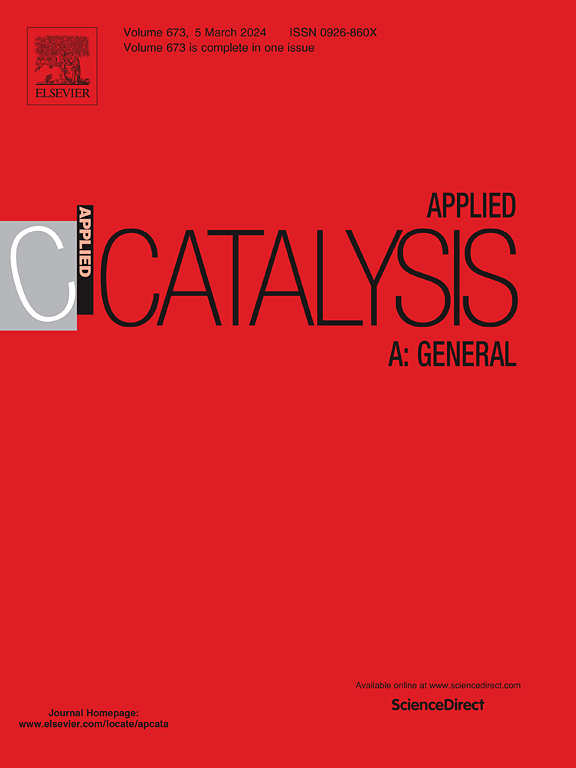先进电催化剂电化学选择性还原CO2制甲酸的研究进展
IF 4.7
2区 化学
Q2 CHEMISTRY, PHYSICAL
引用次数: 0
摘要
电催化反应可以将二氧化碳(CO2)转化为甲酸(HCOOH),这被认为是一种有前途的可持续能源转化和有价值化学品生产途径。然而,CO2还原反应(CO2RR)生成HCOOH存在反应电位高、活性位点不足、产物选择性低的问题。本文从电催化剂与CO2RR性能的构效关系出发,综述了金属及金属氧化物、金属-有机框架、共价有机框架和碳基材料等催化剂的研究进展。然后,分析了提高CO2RR选择性和稳定性的形貌控制、缺陷工程和界面工程调控策略。此外,还全面讨论了CO2RR对HCOOH在电化学能源技术(甲酸燃料电池和水分解)中的实际应用。最后,对电化学选择性还原CO2为HCOOH的先进催化剂的研究前景进行了展望。这将为设计高选择性、高稳定性的CO2RR - HCOOH电催化剂提供新的思路。本文章由计算机程序翻译,如有差异,请以英文原文为准。
Progress of advanced electrocatalysts towards electrochemical selectivity reduction CO2 to formic acid
Electrocatalytic reaction can convert carbon dioxide (CO2) into formic acid (HCOOH), which is considered as a promising pathway for sustainable energy conversion and valuable chemicals production. Nevertheless, CO2 reduction reaction (CO2RR) to HCOOH exists high reaction potential, insufficient active site and low product selectivity. In this review, various catalysts, including metal and metal oxides, metal-organic frameworks, covalent organic frameworks and carbon-based materials, are summarized from the structure-activity relationship between electrocatalysts and CO2RR performance. Then, the regulation strategies of morphology control, defect engineering, and interface engineering, to improve the selectivity and stability of CO2RR have been successively analyzed. In addition, the practical application of CO2RR to HCOOH in electrochemical energy technologies (formic acid fuel cells and water splitting) are comprehensively discussed. Finally, the perspectives and outlook of advanced catalysts for electrochemical selectivity reduction CO2 to HCOOH are thoroughly addressed. This review will be helpful to provide new insights for designing high selective and stable CO2RR to HCOOH electrocatalysts.
求助全文
通过发布文献求助,成功后即可免费获取论文全文。
去求助
来源期刊

Applied Catalysis A: General
化学-环境科学
CiteScore
9.00
自引率
5.50%
发文量
415
审稿时长
24 days
期刊介绍:
Applied Catalysis A: General publishes original papers on all aspects of catalysis of basic and practical interest to chemical scientists in both industrial and academic fields, with an emphasis onnew understanding of catalysts and catalytic reactions, new catalytic materials, new techniques, and new processes, especially those that have potential practical implications.
Papers that report results of a thorough study or optimization of systems or processes that are well understood, widely studied, or minor variations of known ones are discouraged. Authors should include statements in a separate section "Justification for Publication" of how the manuscript fits the scope of the journal in the cover letter to the editors. Submissions without such justification will be rejected without review.
 求助内容:
求助内容: 应助结果提醒方式:
应助结果提醒方式:


